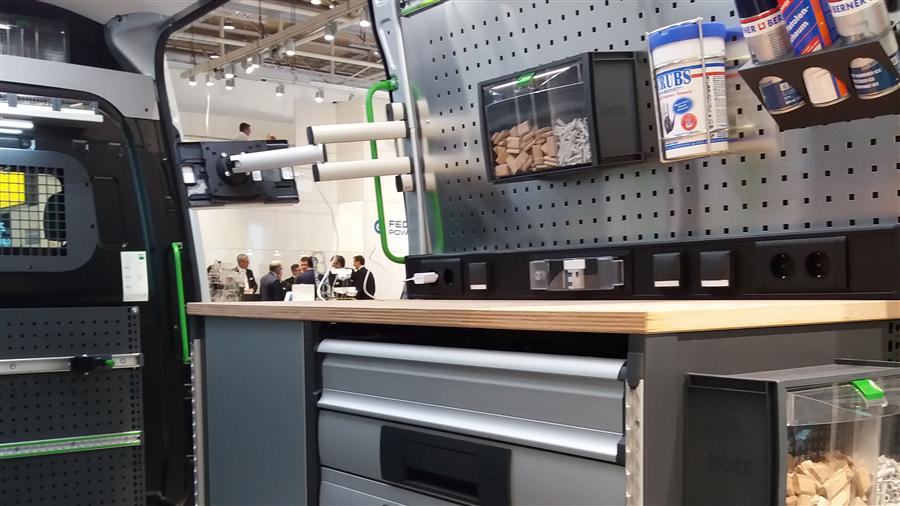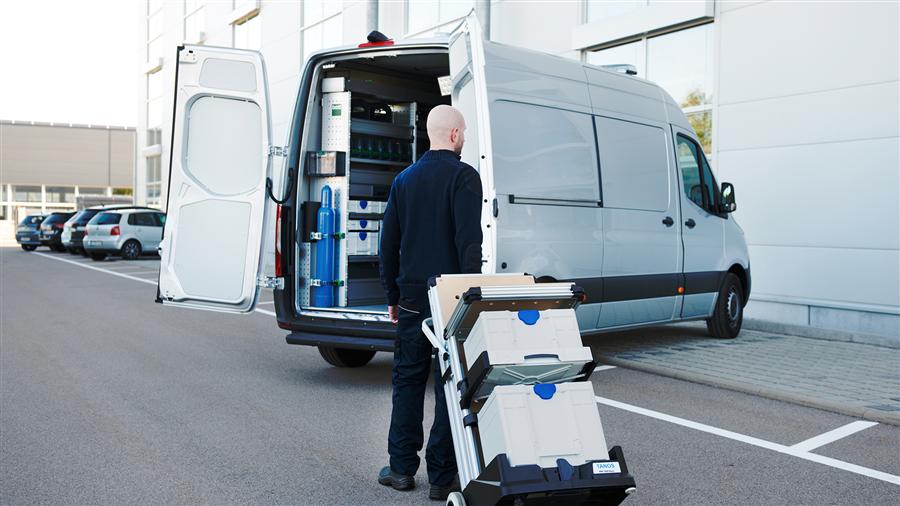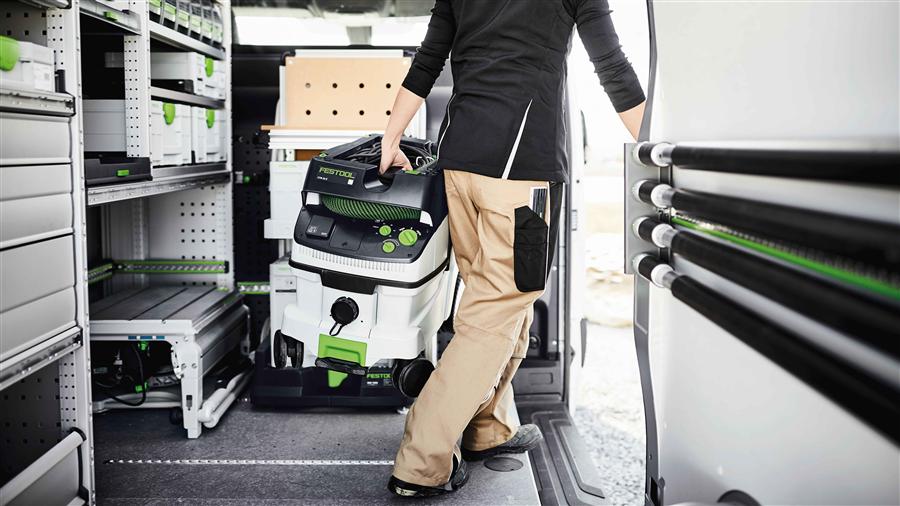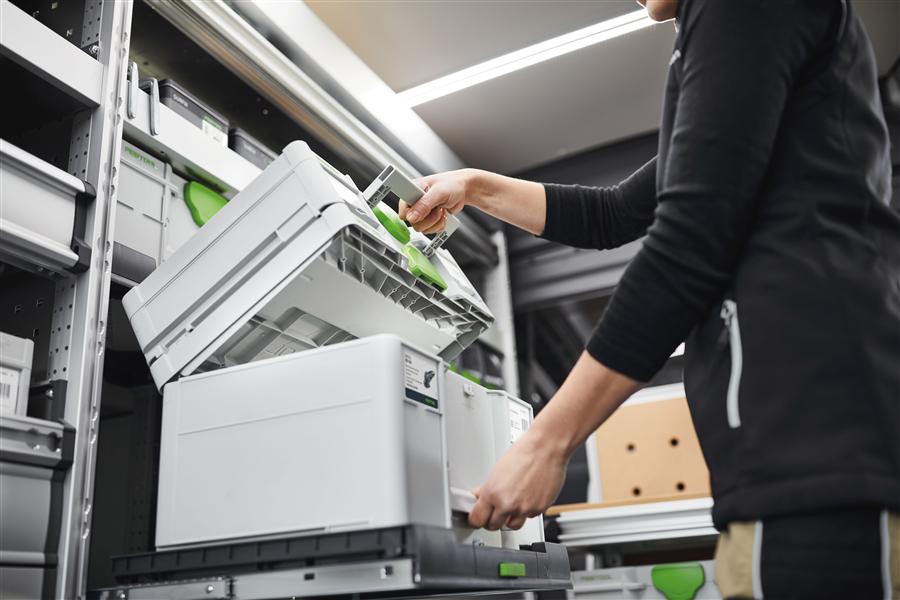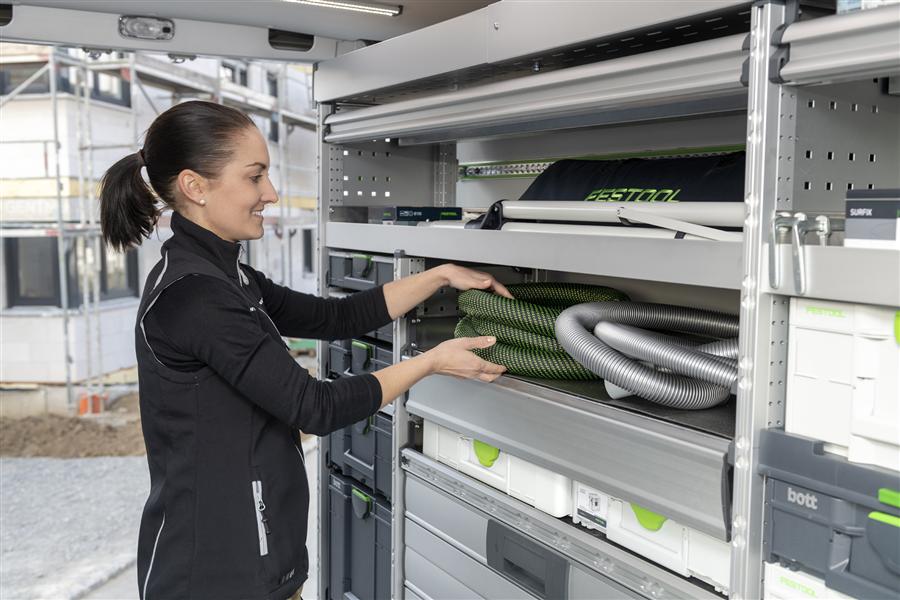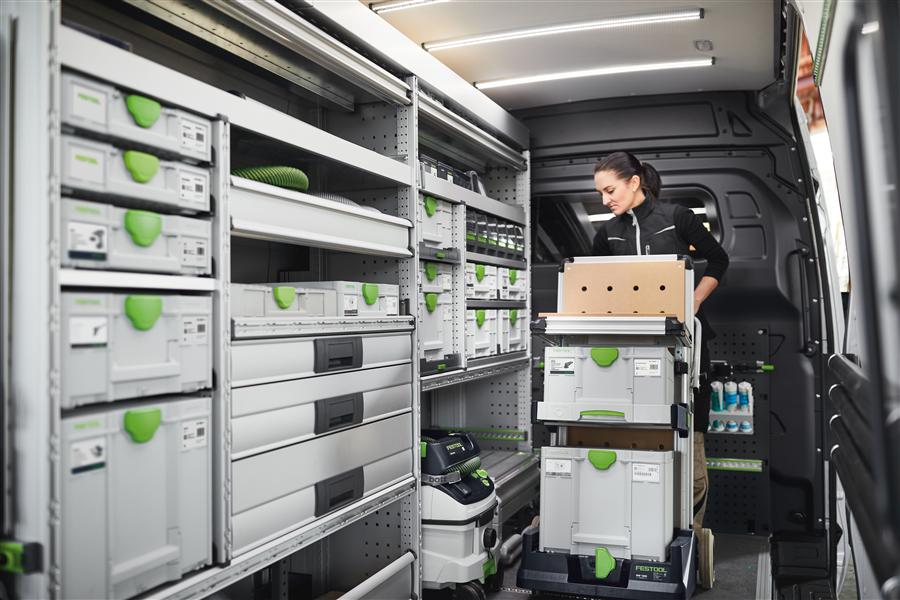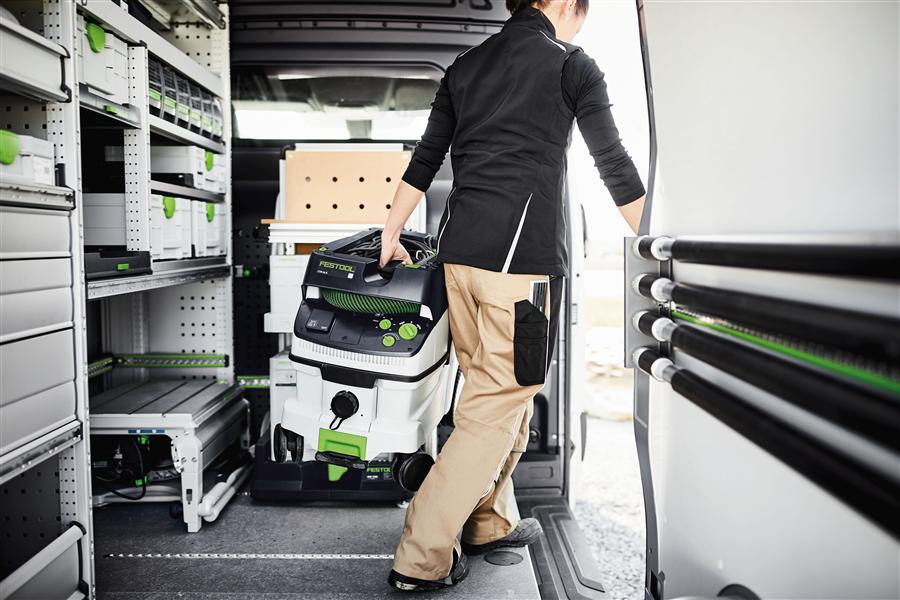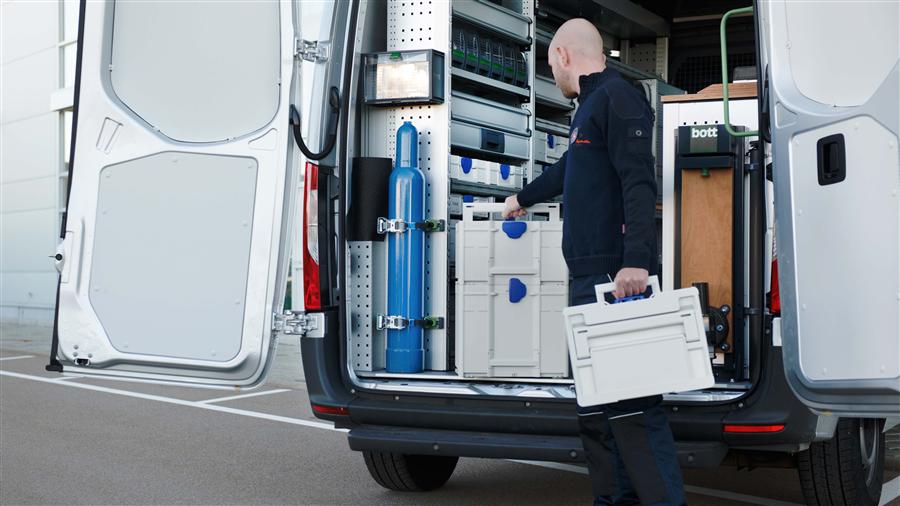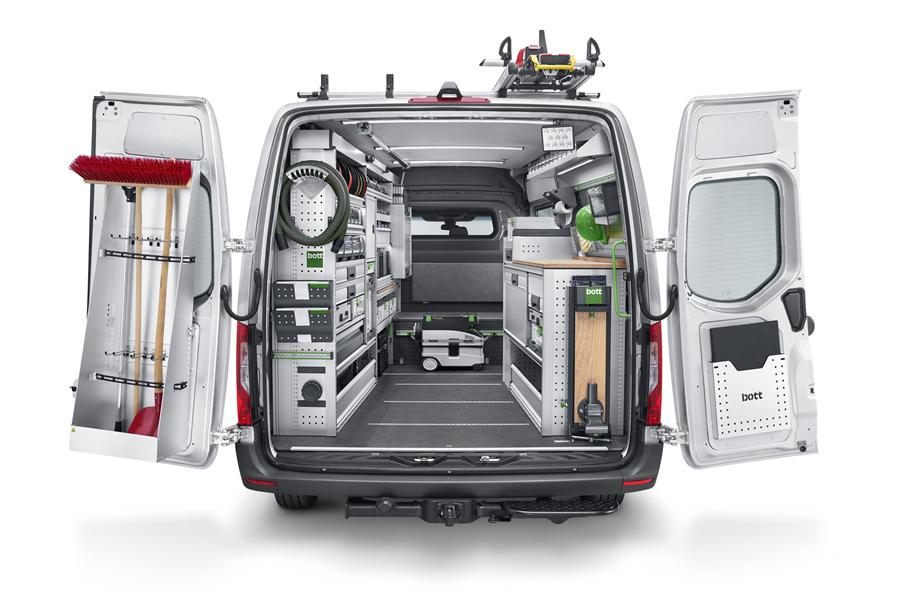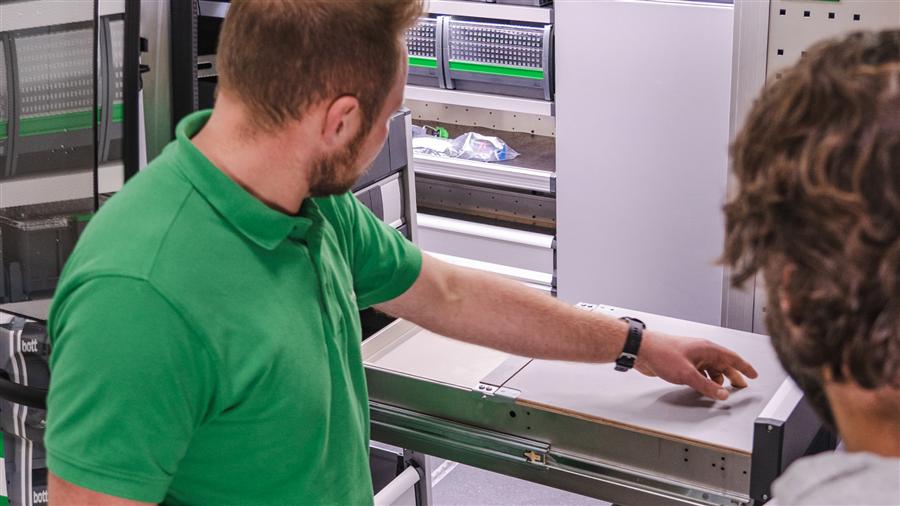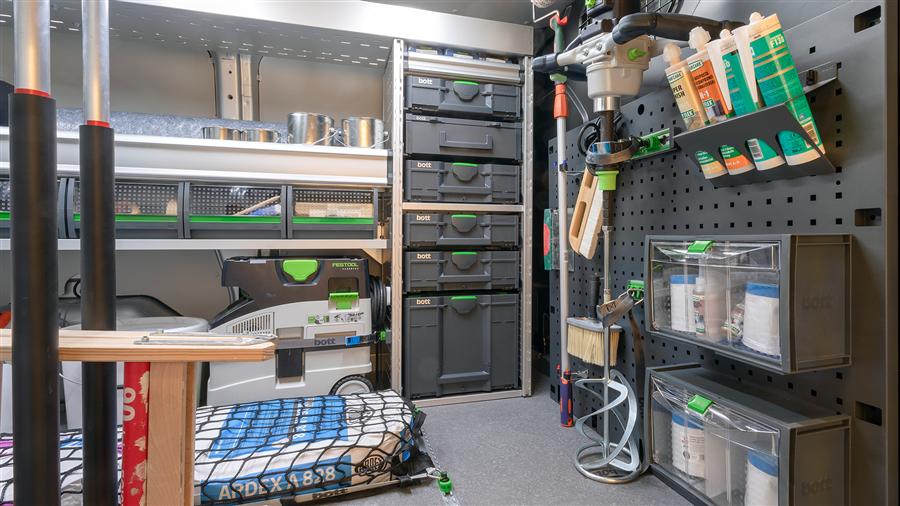Power supply
Think about whether you need light in the trade vehicle, and thus a power supply, early on at the design stage. In order to charge cordless tools or to provide a power supply for corded tools, a 230 V power supply is available as standard. Fitting a power inverter can turn the direct current from the vehicle battery into alternating current. If more power is required, the power supply can also be implemented with 12 V machines or a 230 V external power supply.Power output
Machines with an output of up to 1000 W can be operated relatively simply in this way – everything that goes beyond this requires additional measures. Outputs of up to 2400 W (equivalent to average mains power in a house), can be operated with power inverters. Anything with a greater output requires customised special solutions. A second battery is almost always sensible to have if you intend to use electric machines in the vehicle interior or in the immediate area.Self-sufficient working
During the design stage of the integrated vehicle interior, analyse which machines you use how often and with what power output in order to figure out which solution is ideal for you. From a practical perspective, all solutions can be implemented. Consider that it is always of benefit to be able to work in the vehicle self-sufficiently – because not every work environment will have a power supply you can connect machines to. Thus use the vehicle battery or additional batteries often and charge them over night so they are fully charged and ready for the working day in the morning.